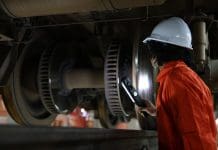Thomas Owens, logistics manager for Viking Extrusions, explores the racial bias between the number of non-white engineering students graduating, and those who enter into the sector for employment
According to the data, there is a disproportionate underrepresentation of persons of colour — who number approximately 14% of the working-age population — and yet account for just under 9% of the employment figures.
This is not only an ethical problem but a huge missed opportunity. UK engineering has been in a state of recruitment crisis for at least the past four years, with annual shortfalls in the necessary recruitment levels numbering in the tens of thousands.
The good news is, with some inward reflection, the old engineering sector can kill two birds with one stone. But first, it needs to address some long-standing assumptions.
Why the ‘race gap’ exists
It is not wholly understood why the ‘race gap’ exists. There are undoubtedly many factors at play, and not all of them are understood, but some studies have suggested that there may be unconscious racial bias at play. No walk of life is untouched by unconscious biases, but it is thought that UK engineering, in particular, suffers from unconscious racial bias more so than other sectors.
Additional studies have revealed that it takes non-white engineering graduates up to 20% longer to enter into the field when compared to their white counterparts. Again, there probably are other factors at play, but this could be interpreted to mean there are additional barriers for non-white graduates to navigate.
A big factor may be a lack of visible representation. Engineering is disproportionately white, even when accounting for the fact that the country is majority white. In fact, only 0.05% of engineering board members are non-white, at least according to the Association for Black and Minority Ethnic Engineers (AFBE). This may make non-white graduates feel as though they do not have a place in engineering. It might also make hiring managers unknowingly discriminate against non-whites, as it might seem like they do not “look” like typical engineers.
Undoing the race gap
There are multiple initiatives that are working to solve the problem. Perhaps the most notable is the Prince’s Responsible Business Network (PRBN), which has developed its own Race at Work charter — a sort of calling for more businesses to openly commit to more diverse hiring practices.
In addition to this, the last few years have seen the implementation of more practical decisions that may help hiring managers and bosses in engineering think more inclusively, and from different perspectives at work.
One popular initiative includes: replacing experience-based interviews with ones that place the onus on strength. The idea behind this is that, as white graduates are more likely to have friends or family already working in engineering, then this might give them an unfair “leg up”, allowing them to accrue more experience via apprenticeships or informal work placements before graduation. A strength-based approach is one approach to level the playing-field.
Others involve unconscious racial bias training, to allow engineers to realise if they are unintentionally being discriminatory, and reverse-mentoring schemes. This latter initiative usually involves contrasting older managers with younger non-white apprentices, allowing them to essentially trade experience.
Less ambitious — but still important — initiatives include introducing learner courses and tools to help develop diversity training and working to create an environment where employees feel free to speak their minds (and to anonymously report discrimination of they feel the need to do so).
Criticisms
These initiatives do have their critics. One of the most common fears is that actively promoting non-white staff members will degenerate into a quota-driven “box ticking” exercise, one that favours skin colour over meritocracy.
Critics can be tempered by reassurances and realities. The ambition to broaden out the recruitment process is only to consider more candidates for a job position; to provide opportunities over certainties. But merely looking for more candidates by itself is hardly a bad idea.
Widening the pool of candidates to choose from will organically see a rise in the representation of non-white engineers. The hope is that this greater visibility in the industry will open the door to, entice, encourage and convince other minority ethnic candidates that engineering is available to them as much as anyone else.
Opportunities
As mentioned earlier, UK engineering is in the midst of a recruitment crisis. Broadening the pool of candidates and encouraging more minority ethnic candidates, at the very least, will be a throwing of the rope to an industry that is currently drowning.
And if that isn’t enough, there are some financial incentives too. One study by McKinsey, the consultancy firm, suggests that diversity is a lucrative enterprise — those diverse companies make bigger profits than their other, non-diverse peers. It isn’t entirely clear why this might be. But the general idea is that diverse workers bring unique points-of-view to the table, that can help businesses recognise new opportunities and enter into new markets.
(It’s also important to mention that this seems to work with increased gender diversity as well, and not just racial diversity.)
Additionally, if the PRBN’s numbers are accurate, then race equality in British businesses could actually boost the UK economy by around 1.3% (or £24bn) a year.
Looking to the future
Clearly the current trends are not sustainable, not least for the fact that UK engineering desperately needs workers, but for the fact that the non-white population in Great Britain is projected to reach nearly a third of the population in the next few decades. If current attitudes prevail, that is a massive chunk of the populace left out of the recruitment process.
So we can only expect the initiatives listed above to accelerate, and for strength-based interviews, and unconscious bias training, for example, to become more prominent.
Not every engineering business will have the monetary ability to take advantage of these new policies, but even the smallest business will have access to some resources from established support networks, such as the above listed AFBE and PRBN. The attitude to change — which everyone can have — will go the furthest in helping to accelerate change.
Thomas Owens
Logistics manager














